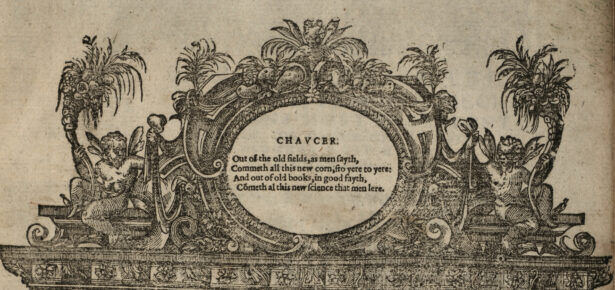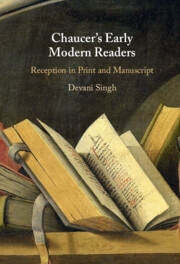
We tend to think of the physical printed book as a traditional format. In our own cultural moment, people often draw a contrast between printed books you can leaf through, dog-ear, or scrawl in, and their newer digital versions, including audiobooks, ebooks, and e-readers. These two forms of the book have regularly been pitted against each other in the media, where headlines in the early 2000s imagined an ongoing tug-of-war between the digital book and its paper ancestor.
As a literary scholar interested in the medieval and early modern book, these contemporary debates are noteworthy to me because they recall other moments of technological change in the longer arc of history, when people were concerned not about the move from printed to digital books but from handwritten to printed ones.
Print did not replace the making or reading of handwritten books, but it did give readers another medium for consuming works of literature. Medieval manuscripts and early printed books containing the works of the late medieval poet English Geoffrey Chaucer demonstrate some of these complex exchanges between old and new media. Chaucer is an especially rewarding subject for thinking about such intersections. He lived in an era before the introduction of printing in England, but Chaucer’s works were quickly adapted for the new medium. The Canterbury Tales (c. 1476) was one of the first large books printed by Caxton when he set up his press at Westminster. In the sixteenth and seventeenth centuries, hefty and expensive folios of his printed Workes (1532, 1598, 1602, 1687) continued to play a decisive part in constructing Chaucer as a venerable ancient authority and in defining his literary canon. These newly printed books positioned themselves as the definitive editions of Chaucer in the early modern period and were commercially and culturally successful. These were the versions of Chaucer read by Edmund Spenser, William Shakespeare, Ben Jonson, and John Milton, and they shaped early modern literary history in profound and demonstrable ways.
My new book, Chaucer’s Early Modern Readers, offers plenty of new evidence for the contributions of early modern print to Chaucer’s remarkable longevity. The book argues that the effects of Chaucer’s printed books radiated outwards and interacted with manuscript culture in ways which reveal much about the history of reading Chaucer. The newly printed Workes of Chaucer were popular and well received in the early modern period, but they did not bring about the demise of the medieval manuscripts in which he was originally read. Focused on traces of early modern reading found in dozens of surviving copies of Chaucer’s manuscripts and early printed books, my book offers a more nuanced history of how old media might be re-made in the image of new technologies—in this case, how late medieval manuscripts were materially altered to take on characteristics of the poet’s later printed Workes.
Some readers combed through the older manuscripts and corrected the Middle English according to the versions of the text printed in more recent editions of Chaucer, when they found that the words of the medieval scribes diverged from those in print. Others made painstaking material and textual repairs in the medieval manuscripts, adding in specially sourced parchment leaves on which they copied bits of Chaucer’s text, again typically using newer printed books as a source. The temporalities of the books perfected in these ways are messy; they are, at once, medieval and early modern.
For historians of the book, the perfected copies tell of the surprising routes by which new books in the sixteenth and seventeenth centuries inspired interest in and perhaps even extended the lives of old ones. And for literary scholars, they offer new insights in which aspects of Chaucer and his works readers found attractive, challenging, or indispensable. These books show, too, the unassailable persistence of the literary past in an early modern present, when copies of Chaucer’s works sat comfortably beside Spenser, Shakespeare, Jonson, and Milton on the stalls of booksellers and on the desks of early modern readers.
Chaucer’s Early Modern Readers is, appropriately, available both in hardback and online, via a free Open Access publication funded by the Swiss National Science Foundation. [https://www.cambridge.org/core/books/chaucers-early-modern-readers/06FBF6EFE160310BCD447EF52981F9E6#fndtn-contents]

Chaucer’s Early Modern
Readers by Devani Singh
Latest Comments
Have your say!